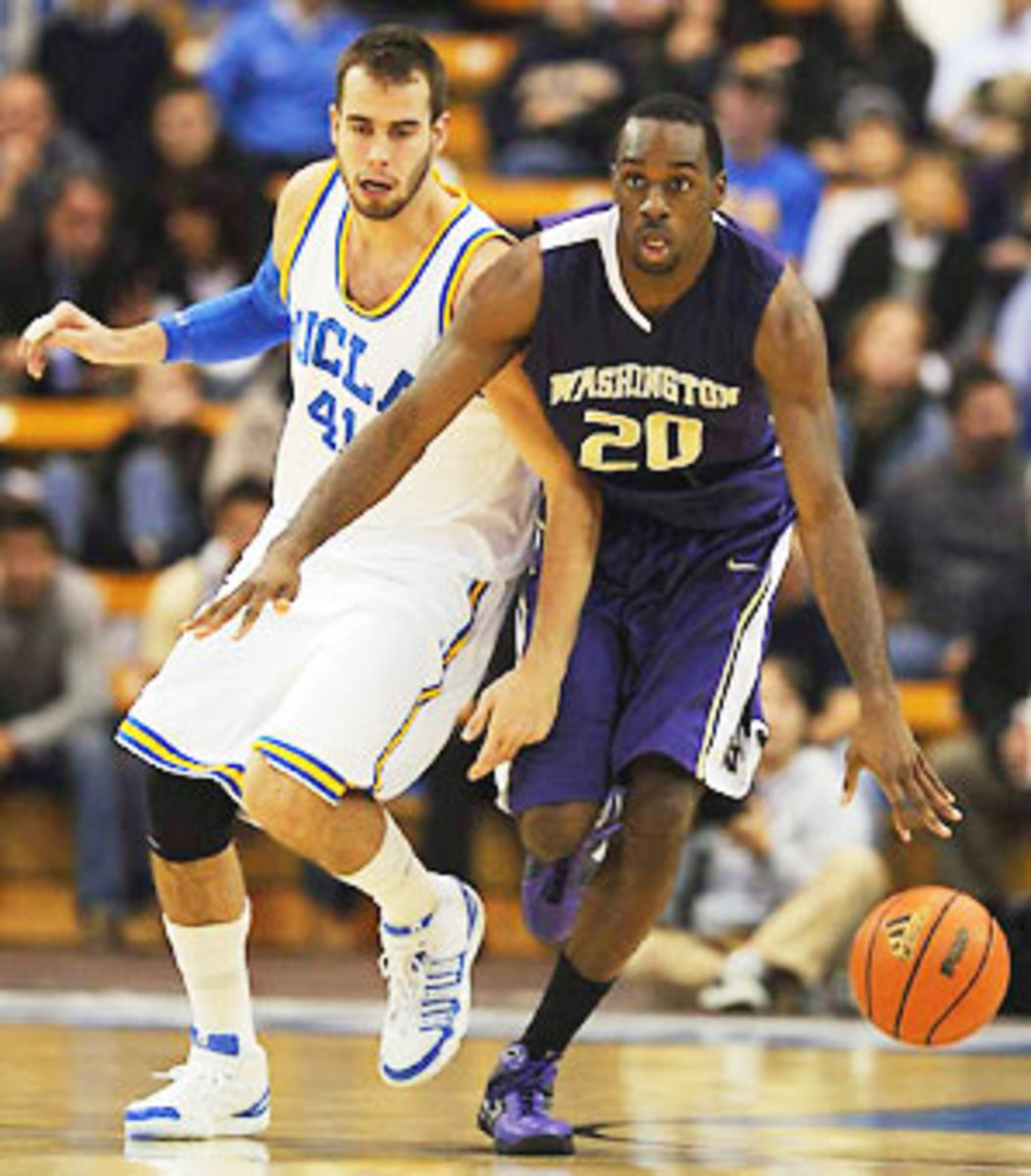Season's biggest disappointments: Pac-10, UNC and Willie Warren
"It's L.A. -- it's great marketing," Mayo said. "I'll get my face on the West Coast."
His other stated motivation was to play for then-coach Tim Floyd, not because of what he meant to the USC program, of course, but for Floyd's NBA experience. And so from the start, Mayo's matriculation to the cardinal and gold was as much a business decision as anything else. (Especially if recent allegations against Floyd and USC involving Mayo are true.)
Mayo's one-year USC tenure proved to be a disappointment -- the Trojans failed to win an NCAA tournament game -- and similarly, all across the Pac-10, schools have seen their basketball teams used as launching pads to the NBA.
That exodus of talent, without successful replenishment, has made the Pac-10 the most disappointing conference of the 2009-10 season.
In the most recent Associated Press poll, no Pac-10 school received a single vote, a total shutout of confidence that any team is among the nation's top 25, or even the top 40, as 15 other unranked schools appeared on at least one ballot. This season is the first since 1987 in which the Pac-10 has had a week without a ranked team.
In the most recent mock bracket from SI.com's Andy Glockner, only one Pac-10 team, California as a No. 12 seed, was in the NCAA tournament field. Arizona State is hot on Cal's heels for the regular-season conference crown, and two teams play in Berkeley on Saturday. (These two front-runners further display the true upheaval in the downtrodden but proud Pac-10: Cal hasn't won a conference title in 50 years and ASU has never won one.) But ultimately, the Pac-10's total tourney representation may come down to which team earns the automatic bid by winning the league tournament.
In contrast, the Pac-10 sent six teams to the NCAA tournament each of the past three years. Only once since 1993 has the league even had as few as three schools invited; it last had only one team in 1978, when the bracket included 32 teams.
While the Pac-10 had record football success this fall, with six schools winning at least eight games, its basketball counterparts are struggling, in part because of early player exits.
Beginning with Mayo's draft class of 2008, no league has suffered more casualties to the pro ranks than the Pac-10. Whether it's because players, like Mayo, want the West Coast exposure or whether they want to attach themselves to traditionally strong programs, in the last two years seven players were drafted by the NBA after their freshman season and three more left after their sophomore years. In all, the Pac-10 has had 21 players taken in the past two drafts, eight more than any other league. The Big 12, Big East and ACC have all had 13 in the period, the same number of Pac-10 first-round selections.
The problem is that the Pac-10 failed to replace those blue-chip players. Three of the four McDonald's All-Americans in that 2007 game who went to Pac-10 schools (Mayo, Kevin Love, Jerryd Bayless) left after one year, while the fourth (James Harden) stayed for only two. The next year there were five McDonald's All-American Game participants who committed to Pac-10 schools; only two remain in the league. The conference received only one commitment from the 2009 McDonald's All-American game (Washington's Abdul Gaddy). And now at least one mock draft, DraftExpress.com, projects that just one Pac-10 player (Washington senior Quincy Pondexter) will be selected this June.
As UCLA coach Ben Howland said on last week's league teleconference, the difficulty in recruiting in the culture of today's college game is that "you don't know when guys are going to leave." His Bruins have seen two players (Love and guard Jrue Holiday) leave after one year and another (Russell Westbrook) leave after two.
Sure, there's been significant coaching turnover in the conference, with three rookie head coaches and one second-year coach this season, but there has also been a lingering O.J. Mayo Effect dragging down the Pac-10.
Without a doubt, the winner is North Carolina, which has lost nine of its last 11 and sits just a half-game above N.C. State in the ACC cellar. Though the Tar Heels lost their top four scorers (and six of their top eight players) from last year's national championship team, they still fielded a talented squad with seven McDonald's All-Americans.
UNC even showed that talent early, with wins over Michigan State and an Evan Turner-led Ohio State team and a narrow two-point loss to Kentucky. Since conference play began, however, the Tar Heels haven't protected the ball, shot well or played meaningful defense. They rank No. 294 (out of 334) in turnovers per game, No. 261 in free-throw percentage, No. 290 in three-pointers made per game and No. 271 in points allowed.
Warren, Oklahoma's reigning Big 12 Freshman of the Year and a preseason All-America guard, entered the season looking to pick up where Blake Griffin left off, as last year's Sooners came within a game of the Final Four.
Unfortunately for Warren, little has gone as expected. Though he leads Oklahoma with 16.3 points per game, he is also tops in turnovers, at nearly four per game. Against Oklahoma State in January, he was briefly benched by coach Jeff Capel after committing three quick turnovers -- a move that was cheered by the home crowd.
Now Warren is battling a sprained ankle and a bout of mononucleosis, and his return to the court is uncertain. Even his teammates have noticed his bad luck.
"It's just been a down season for Willie," freshman Tommy Mason-Griffin told local reporters on Saturday. "Everything's going bad."
Oklahoma will likely be left out of the NCAA tournament, but Warren can take heart knowing he's still projected to be a mid-first-round NBA pick.





